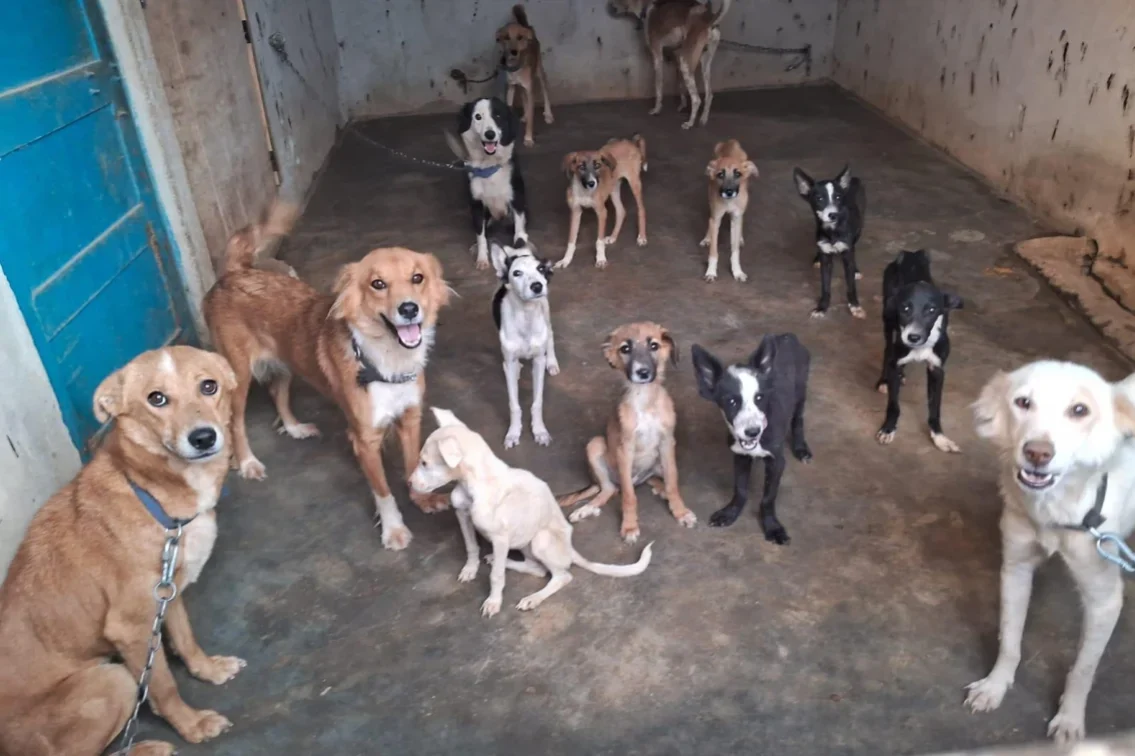Learn all about TVT, or Transmissible Venereal Tumour, and help a stray dog in need!
TVT is a common dog disorder that is often seen in strays that do not have homes or regular care. It is essentially a cancerous tumour, so the treatment for this will involve some sort of radiation-based therapy. TVT is thought to be more dangerous than “regular” cancer because it can be spread via skin-to-skin contact (from one dog to another).
Important terms to know
- Histiocytes – “Immune system” cells in the body found all over, including the skin. (TVT happens when the body doesn’t regulate these cells from growing.
- Metastasis – This term refers to the spread of cancer or tumour from the original spot of growth to a secondary organ in the body. In simple words, the tumour spreads to another host, which is specifically not the one that it was originally a part of.
What is TVT?
The full form of TVT is “Transmissible Venereal Tumour”. The name itself indicates that it is transferred from dog to dog, making it a very dangerous and lethal disease. TVT is transmitted sexually, so it becomes more common in uncontrolled populations of dogs such as strays – especially ones that are not spayed or neutered (or have undergone any sterilization process). An estimated 23%-24% of reported tumours in the dog population are diagnosed as TVT (according to this study on Canine Transmissible Venereal Tumour by G Purohit for The Internet Journal of Veterinary Medicine).
TVT is common in tropical and sub-tropical climates, so India sees a high frequency of cases per year. It gets progressively worse if left untreated, and can metastasize and affect other parts of the body. It is the most common form of tumour in India, the Bahamas, and Japan.
Why is it more common in stray dogs?
Keeping a dog at home prevents uncontrolled intercourse with other dogs. Stray dogs are usually more likely to have sex in uncontrolled environments. TVT commonly spreads through sexual intercourse which causes abrasions in the genital areas. You won’t see TVT cases as often in North America and Europe, because of stray dog population control and swift and efficient treatment of cases when they do come to turn up.
Among the stray dog population, dogs lacking in immunity or that are neonatal are more susceptible to TVT and a whole host of other contagious diseases.
Why is it such a big issue?
The scary thing about TVT, in simple terms, is that it is both a cancer and a virus. Sexual transmission of cancer is a scary development in medicine, and the pervasiveness of TVT once it enters a stray dog population can mean so many dogs suffer from the pain and agony of cancer. Due to sheer numbers, it is not possible to quickly treat a stray dog with TVT before it becomes more than just a skin-level cancer/tumour. This makes it a huge deal in the field of dog diseases and disorders!
There are many cases that resolve themselves without medication as well.
What are the symptoms of TVT?
The tumour grows near genitalia of the dog. In males, it is near the foreskin of the penis, and in females, it is near the vulva. In some rare cases, you can spot it on the nose and in the mouth region. Both types will see some discharge, so keep an eye out for that and a growth.
The initial reported symptoms of TVT include discharge from the genital area, often with a foul odour. If a dog is licking its genital area very frequently due to some irritation, it could possibly be TVT.
Other symptoms can sometimes include inflammation of the face, nosebleeds, and swelling of lymph nodes.
How do you diagnose and cure TVT?
While treatable, TVT is a prognosis that could return again, especially if left unchecked and without proper care. The usual method of reducing TVT is by radiation therapy, and this is often very effective as well. It might become more complicated when there is metastasis, as mentioned earlier. It is better to find and treat this tumour as early as possible before metastasis occurs.
Chemotherapy and other radiation aside, there are many cases of TVT resolving on its own. Vincistrine is a medication used to treat TVT patients as well.
If you see a stray dog suffering from TVT, take it to the veterinarian. You can also connect with us at VOSD. We are a completely no-kill sanctuary with the best medical care available for a surrendered dog.
The information contained in VOSD Vet Advice™ is not intended nor implied to be a substitute for professional medical action which is provided by your vet. You assume full responsibility for how you choose to use this information. For any emergency situation related to a dog’s health, please visit the nearest veterinary clinic.





